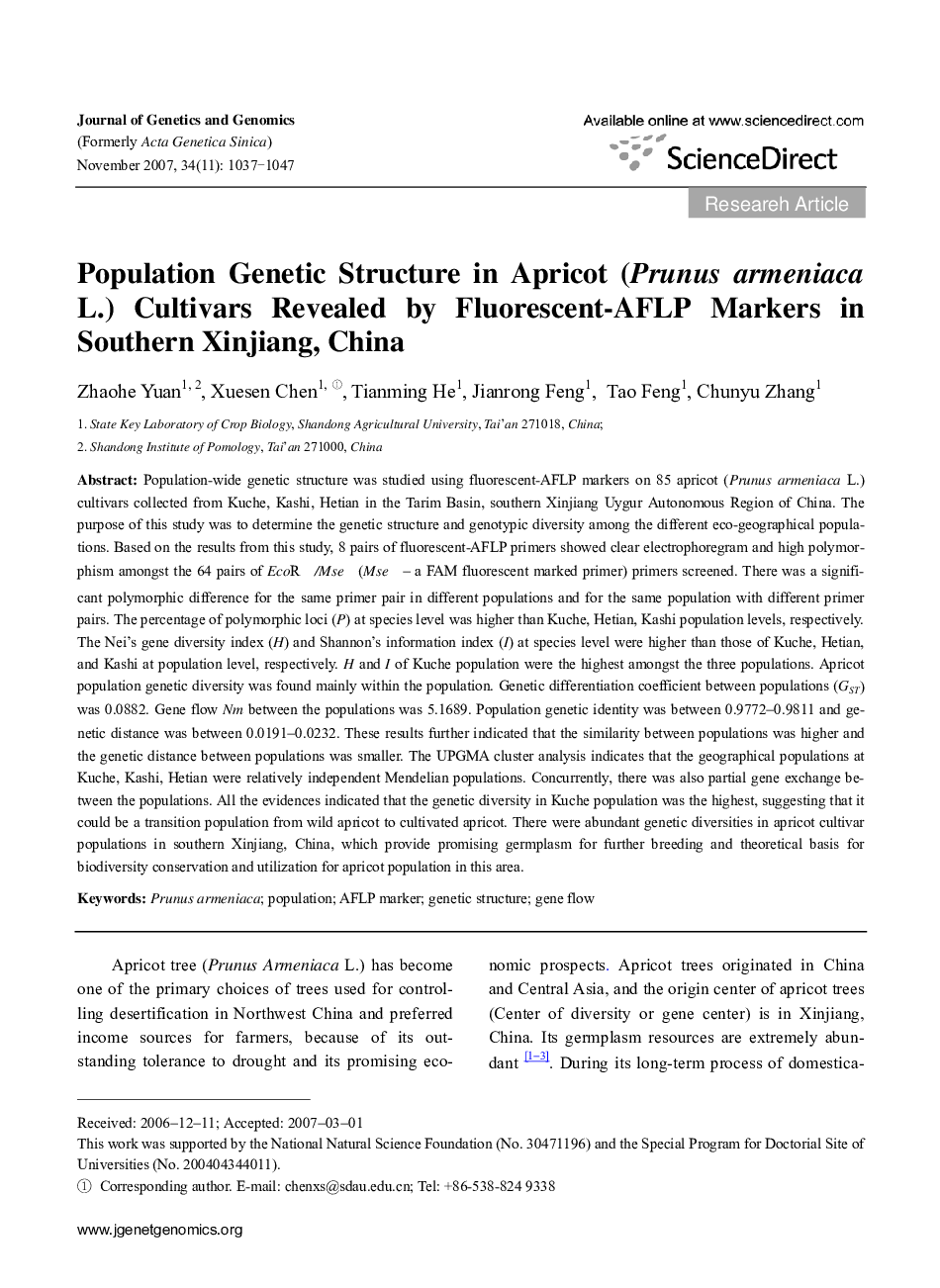| کد مقاله | کد نشریه | سال انتشار | مقاله انگلیسی | نسخه تمام متن |
|---|---|---|---|---|
| 2787970 | 1154370 | 2007 | 11 صفحه PDF | دانلود رایگان |

Population-wide genetic structure was studied using fluorescent-AFLP markers on 85 apricot (Prunus armeniaca L.) cultivars collected from Kuche, Kashi, Hetian in the Tarim Basin, southern Xinjiang Uygur Autonomous Region of China. The purpose of this study was to determine the genetic structure and genotypic diversity among the different eco-geographical populations. Based on the results from this study, 8 pairs of fluorescent-AFLP primers showed clear electrophoregram and high polymorphism amongst the 64 pairs of EcoR|/Mse|(Mse|- a FAM fluorescent marked primer) primers screened. There was a significant polymorphic difference for the same primer pair in different populations and for the same population with different primer pairs. The percentage of polymorphic loci (P) at species level was higher than Kuche, Hetian, Kashi population levels, respectively. The Nei's gene diversity index (H) and Shannon's information index (I) at species level were higher than those of Kuche, Hetian, and Kashi at population level, respectively. H and I of Kuche population were the highest amongst the three populations. Apricot population genetic diversity was found mainly within the population. Genetic differentiation coefficient between populations (GST) was 0.0882. Gene flow Nm between the populations was 5.1689. Population genetic identity was between 0.9772–0.9811 and genetic distance was between 0.0191–0.0232. These results further indicated that the similarity between populations was higher and the genetic distance between populations was smaller. The UPGMA cluster analysis indicates that the geographical populations at Kuche, Kashi, Hetian were relatively independent Mendelian populations. Concurrently, there was also partial gene exchange between the populations. All the evidences indicated that the genetic diversity in Kuche population was the highest, suggesting that it could be a transition population from wild apricot to cultivated apricot. There were abundant genetic diversities in apricot cultivar populations in southern Xinjiang, China, which provide promising germplasm for further breeding and theoretical basis for biodiversity conservation and utilization for apricot population in this area.
Journal: Journal of Genetics and Genomics - Volume 34, Issue 11, November 2007, Pages 1037–1047